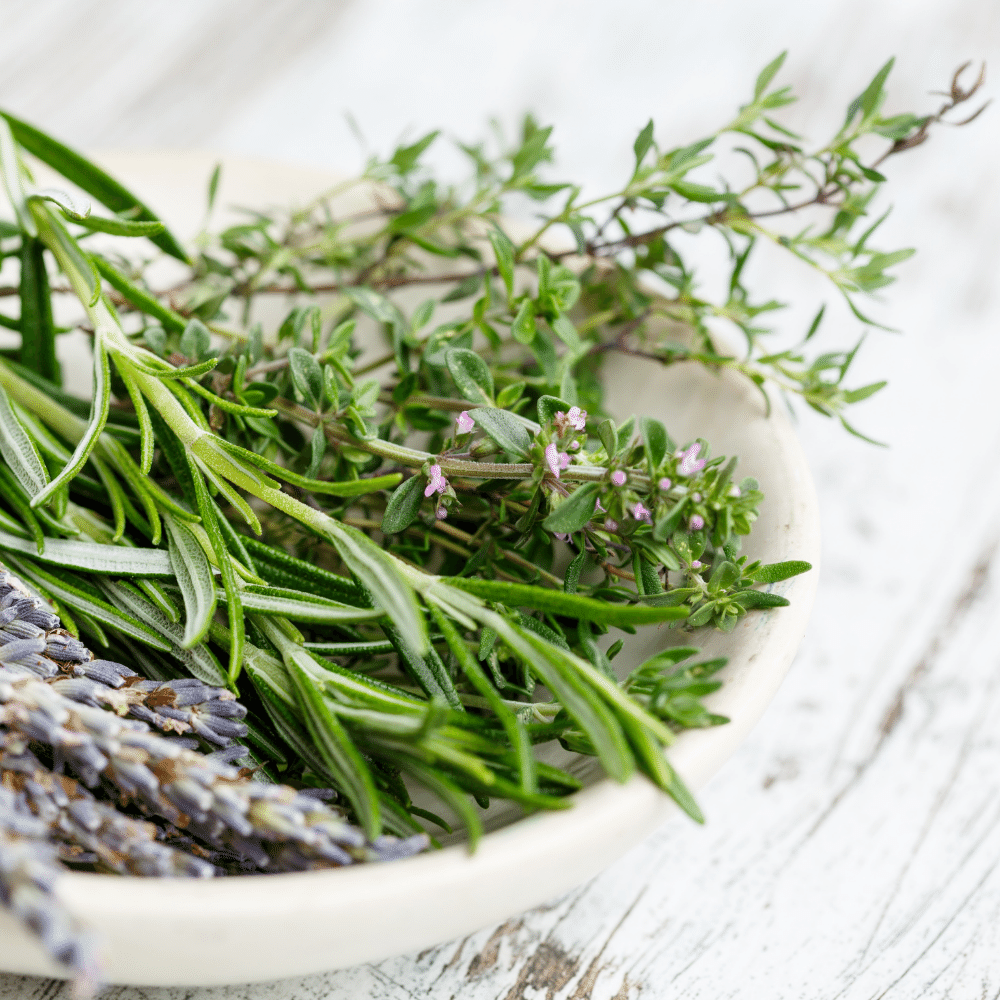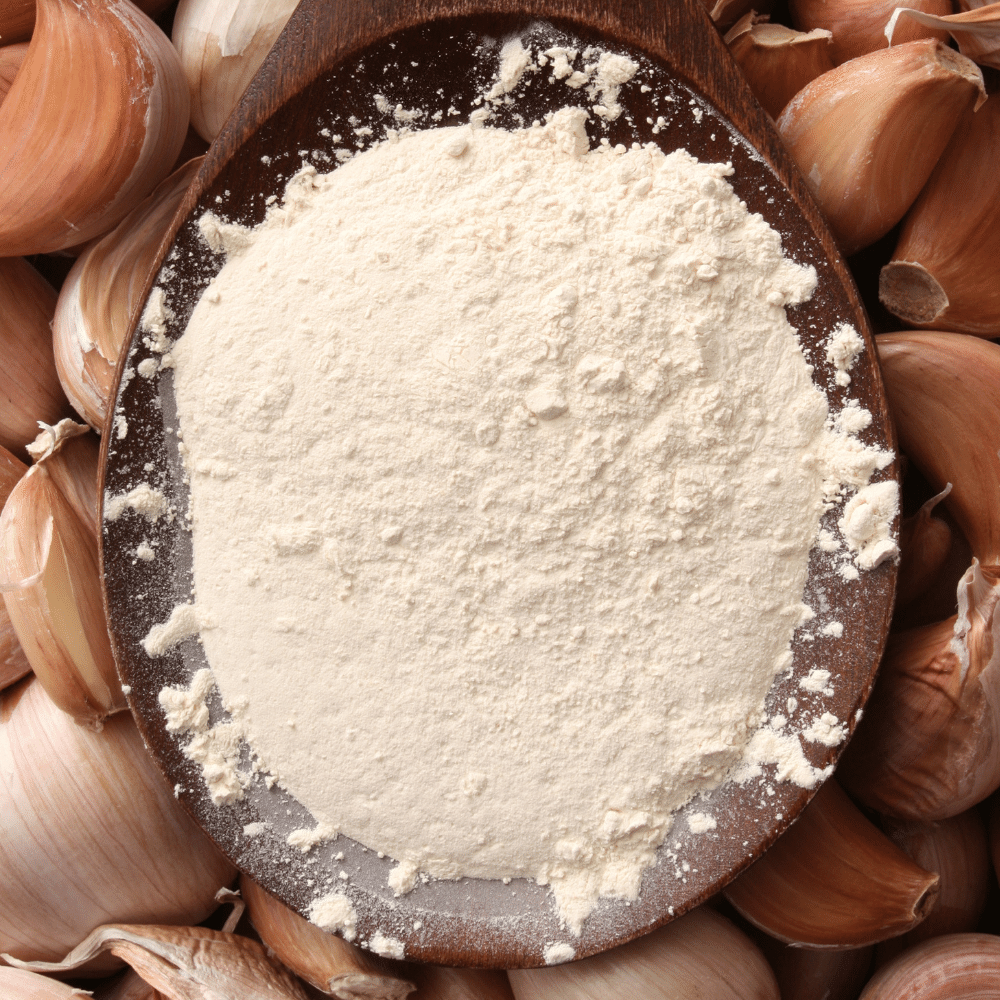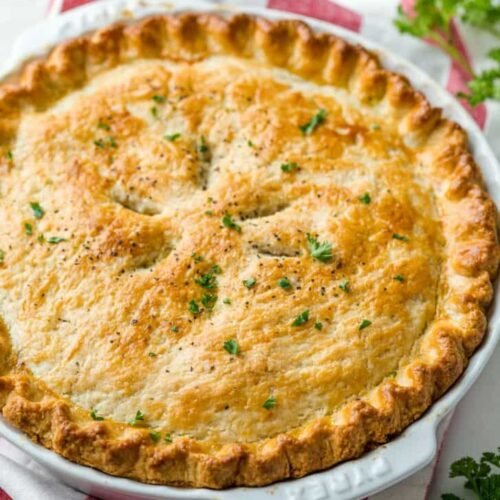Chicken pot pie is a classic comfort food that can be enjoyed any time of year.
But why settle for the same old flavor when you can add some zest and zing to your dish?
The right spices can really bring out the best in this timeless favorite.
Related:
- What To Serve With Chicken Pot Pie – 50 Best Side Dishes
- Chicken Pot Pie Wine Pairing – The 10 Best Wines
In this article, I’m going to share my top 10 spices for chicken pot pie so you can take your meal from ordinary to extraordinary!
From sweet and smoky flavors to savory and spicy notes, these ingredients will make your chicken pot pie sing.
What is Chicken Pot Pie?

Chicken pot pie is a classic comfort food dish that consists of a flaky pastry crust filled with cooked chicken, vegetables, and gravy.
The filling is usually made with diced or shredded chicken, carrots, celery, onions, potatoes (or other root vegetables), peas (or other green vegetables), and herbs such as thyme or parsley.
It’s then topped with a buttery pastry crust and baked until golden brown.
The flavor of the filling can vary depending on the ingredients used; some recipes call for cream or milk to give it a creamy texture while others use stock for more depth of flavor.
Some recipes also include mushrooms or bacon for added richness.
The type of pastry used can also vary; some people prefer puff pastry while others like shortcrust or even biscuit dough.
Chicken pot pie is often served as an entrée but it can also be enjoyed as part of a larger meal alongside sides such as mashed potatoes and roasted vegetables.
It’s easy to make ahead and freeze so you always have something delicious on hand when you need it!
The 10 Best Spices for Chicken Pot Pie
Chicken pot pie is a classic comfort food. The key to making it delicious and flavorful is in the spices.
Here are ten of the best spices that will help transform your chicken pot pie into something truly special:
1. Thyme

Thyme is an herb that belongs to the mint family and has been used for centuries in cooking.
It’s a perennial shrub with small, fragrant leaves and tiny flowers that are usually pink or purple.
The flavor of thyme is earthy and slightly sweet, with notes of lemon and mint.
- Varieties: There are many varieties of thyme available, including English thyme (Thymus vulgaris), French thyme (Thymus herba-barona), lemon thyme (Thymus citriodorus), caraway thyme (Thymus herba-barona var. carvi) and wild thyme (Thymus serpyllum). Each variety has its own unique flavor profile; for example, English thyme is more pungent than French or lemon varieties while caraway has a milder taste with hints of aniseed.
- How Much To Use: When using fresh or dried herbs in recipes, it’s important to use the right amount so as not to overpower other flavors in the dish. For chicken pot pie, you’ll want to use about 1 teaspoon of fresh or ¼ teaspoon of dried thyme per serving. If you’re using ground or powdered forms of the herb, start with just a pinch as these can be quite strong in flavor.
2. Garlic Powder

Garlic powder is a seasoning made from dehydrated and ground garlic cloves.
It has a more intense flavor than fresh garlic, but it also has a longer shelf life.
It can be used as an alternative to fresh garlic in recipes that call for it, or as an additional ingredient to enhance the flavor of dishes.
- Varieties: There are two main varieties of garlic powder; granulated and powdered. Granulated garlic is coarser in texture and has a stronger flavor than powdered garlic, which is finer in texture and milder in taste. Both types are available at most grocery stores, but you may need to look for specialty stores if you’re looking for organic or non-irradiated options.
- How Much To Use: The amount of garlic powder you should use depends on the recipe and your personal preference. As a general rule of thumb, start with 1/4 teaspoon per pound of chicken when making chicken pot pie (or other dishes). You can always add more if needed after tasting the dish once it’s cooked.
3. Parsley

Parsley is a popular herb used in many dishes around the world.
It has a mild, slightly peppery flavor and can be found in two varieties: flat-leaf (Italian) parsley and curly-leaf parsley.
Both types are widely available fresh or dried, but the flavor of fresh parsley is much more intense than that of dried.
- Varieties: Flat-leaf (Italian) parsley has a stronger flavor than curly-leaf parsley and is often preferred for cooking because it’s easier to chop finely. Curly-leaf parsley is usually used as a garnish because its leaves are too delicate to withstand long cooking times.
- How Much To Use: When adding parsley to your dish, start with 1 tablespoon of chopped fresh leaves per serving or 1 teaspoon of dried flakes per serving. Taste as you go and adjust the amount according to your preference; some recipes may call for up to 2 tablespoons of chopped fresh leaves per serving or 2 teaspoons of dried flakes per serving.
4. Sage

Sage is an herb that belongs to the mint family and has a slightly bitter, earthy flavor.
It’s most commonly used in savory dishes, but it can also be used in sweet recipes as well.
There are several varieties of sage available, including common garden sage (Salvia officinalis), pineapple sage (Salvia elegans), and purple sage (Salvia officinalis ‘Purpurascens’).
- Varieties: Common garden sage is the variety most often found in grocery stores and used for cooking. It has a strong flavor with hints of pepper and lemon. Pineapple sage has a milder flavor with notes of pineapple, while purple sage has a more intense aroma than common garden sage but still retains its earthy taste.
- How Much To Use: The amount of fresh or dried sage you use will depend on your recipe and personal preference. Generally speaking, one teaspoon of chopped fresh leaves or 1/4 teaspoon of ground dried leaves should be enough for four servings. If you’re using dried leaves, add them at the beginning of cooking so they have time to release their flavors into the dish; if you’re using fresh leaves, add them near the end so they don’t lose their flavor during cooking.
5. Rosemary

Rosemary is an evergreen shrub with fragrant, needle-like leaves that are commonly used in cooking.
It has a strong, woody flavor and aroma and is native to the Mediterranean region.
The herb can be found fresh or dried in most grocery stores.
- How Much To Use: When using rosemary in a dish like chicken pot pie, it’s best to use it sparingly as its flavor can easily overpower other ingredients. A good rule of thumb is to start with about 1 teaspoon of finely chopped fresh rosemary or 1/2 teaspoon of dried rosemary for every 4 servings of the dish you’re making. You can always add more if needed but it’s better to start small and adjust as needed.
- What To Look For: When buying fresh rosemary, look for bunches that have bright green needles with no signs of wilting or discoloration. If you’re buying dried rosemary, make sure there are no clumps and that the color is still vibrant green; if it looks dull or faded then it may not have much flavor left in it.
6. Paprika

Paprika is a spice made from grinding dried red peppers.
It has a mild, sweet flavor and can range in color from bright orange to deep red.
The most common type of paprika used in cooking is the Hungarian variety, which is known for its vibrant hue and smoky flavor.
- How Much To Use: When adding paprika to your dish, start with a small amount—a teaspoon or two should do—and increase as desired. Paprika adds both color and flavor so you don’t want to overdo it; too much can make your dish overly spicy or bitter.
- What To Look For: When shopping for paprika, look for varieties labeled “sweet” or “mild,” as these will have the least amount of heat and bitterness. If you’re looking for something more pungent, try smoked paprika (also called Spanish paprika) which has a smokier flavor than regular varieties.
7. Onion Powder

Onion powder is a seasoning made from dehydrated, ground onions.
It has a strong onion flavor and aroma, and it can be used to add an onion taste to dishes without having to use fresh onions.
- How Much To Use: The amount of onion powder you should use in your recipe will depend on the type of dish you are making and how much flavor you want. Generally speaking, start with 1/4 teaspoon per serving for mild flavor or 1/2 teaspoon per serving for more intense flavor. You can always adjust the amount as needed depending on your preference.
- What To Look For: When shopping for onion powder, look for one that is labeled “onion granules” or “onion flakes.” These types of powders have larger pieces than regular onion powder which will give your dish more texture and crunch. Also make sure to check the expiration date before purchasing; if it’s been sitting on the shelf too long, it may not have as much flavor as a fresher product would have.
8. Marjoram

Marjoram is an herb that belongs to the mint family and is closely related to oregano.
It has a sweet, slightly bitter flavor with hints of pine and citrus.
The leaves are small and oval-shaped, and the flowers are white or pink in color.
- How Much To Use: When using marjoram in cooking, it’s best to start with a small amount as its flavor can be quite strong. A good rule of thumb is to use about 1 teaspoon of dried marjoram for every 2 tablespoons of fresh herbs called for in a recipe. If you’re adding it to chicken pot pie, consider starting with 1/2 teaspoon of dried marjoram or 1 tablespoon of fresh marjoram per serving.
- What To Look For: When buying fresh marjoram, look for bunches that have bright green leaves without any wilting or brown spots. Dried marjoram should be stored in an airtight container away from direct sunlight; it will keep for up to 6 months if stored properly.
9. Nutmeg

Nutmeg is a spice made from the seed of an evergreen tree native to Indonesia.
It has a warm, sweet flavor and aroma that is often used in baking and savory dishes.
The nutmeg seed can be ground into a powder or grated fresh for use in recipes.
- How Much To Use: When adding nutmeg to chicken pot pie, it’s best to start with just a pinch or two of freshly grated nutmeg. You can always add more if needed, but too much will overpower the other flavors in the dish. If you’re using pre-ground nutmeg, start with 1/4 teaspoon and adjust as needed.
- What To Look For: When shopping for nutmeg, look for whole seeds rather than pre-ground powder if possible; freshly ground spices have more flavor than pre-ground ones do. Also check the expiration date on any packages you buy; spices lose their potency over time so make sure you are buying fresh product!
10. Black Pepper

Black pepper is a spice made from the dried, unripe fruit of the Piper nigrum plant.
It has been used for centuries in cooking and medicine, and it is one of the most widely used spices in the world.
- When making chicken pot pie, black pepper adds a subtle heat to balance out the richness of the dish. The amount you use will depend on your personal preference; start with a small amount (1/4 teaspoon) and add more as needed. You can also adjust according to how spicy you want your dish to be.
- What To Look For: When buying black pepper, look for whole peppercorns that are dark brown or black in color and have an intense aroma. Ground pepper should be fragrant but not too pungent; if it smells overly strong, it may be past its prime.
Conclusion
In conclusion, chicken pot pie is a comforting and satisfying meal that can be enjoyed any time of year.
To make the dish even more delicious, it is important to use the right spices.
The best spices to use in chicken pot pie are thyme, garlic powder, parsley, sage, rosemary, paprika, onion powder, marjoram, nutmeg, and black pepper. These spices create a flavorful and aromatic blend that will give your pot pie an irresistible taste.
So, the next time you’re making chicken pot pie, don’t forget to reach for these spices to make your dish even more delicious.

The 10 Best Spices for Chicken Pot Pie
Ingredients
- Thyme
- Garlic Powder
- Parsley
- Sage
- Rosemary
- Paprika
- Onion Powder
- Marjoram
- Nutmeg
- Black Pepper
Instructions
- Pick your favorite spices from this list to add to your chicken pot pie recipe.
- Prepare the rest of your meal, and enjoy!
Jenny has always been passionate about cooking, and she uses her platform to share her joy of food with others. Her recipes are easy to follow, and she loves giving tips and tricks to help others create their own unique culinary creations.

